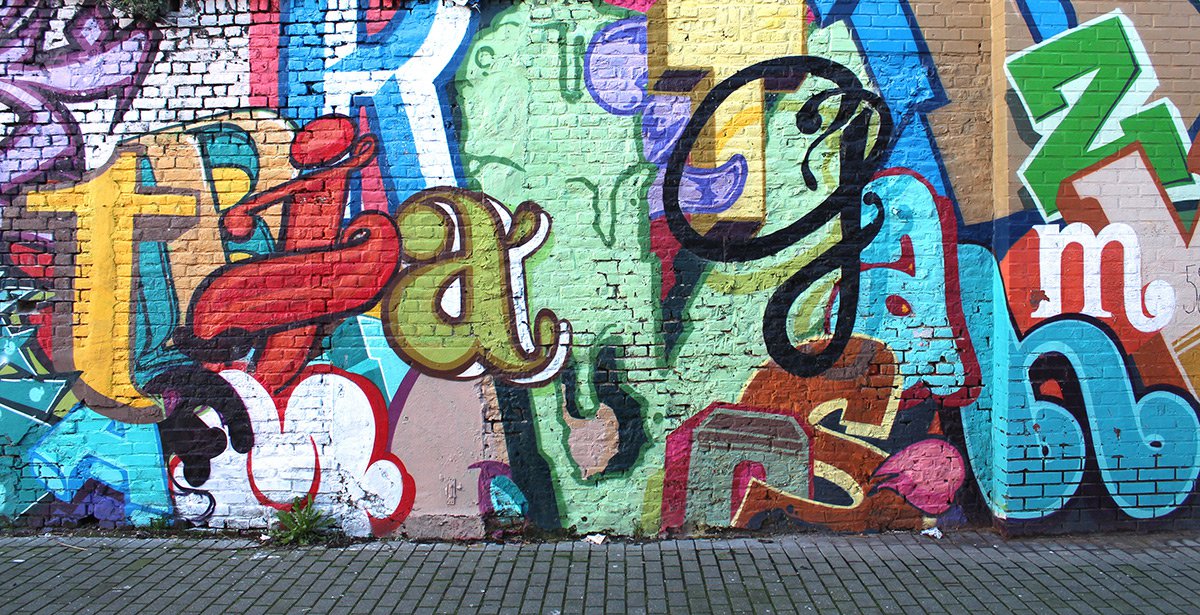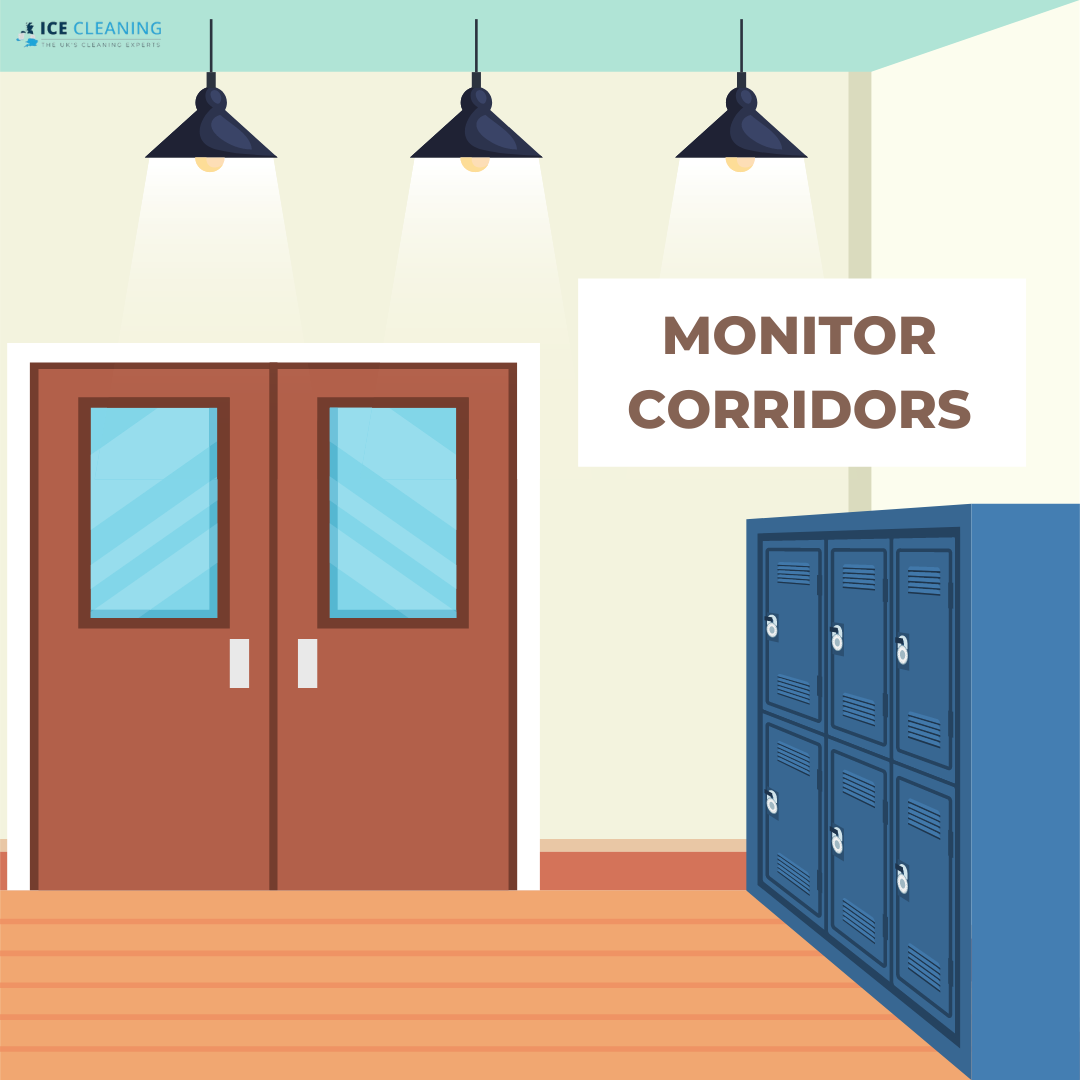​How To Prevent Graffiti In Schools

CONTENTS
- Educate your students
- Encourage school pride
- Introduce disciplinaries
- Monitor school grounds
- Make hotspots less appealing
- Consequences of graffiti in schools
Graffiti is everywhere – and schools are no exception.
According to a recent study by Goodbye Graffiti, 46% of graffiti damage and related offences are committed by males aged 14 to 16 years. Given that during this period teenagers are still in full-time education, schools remain a prime target for potential offenders.
This places a huge pressure on educational bodies to teach young people the consequences of their actions in order to prevent graffiti attacks within school grounds, as well as the wider community.
To some extent, teenagers can be reasoned with. However, staff must be strategic in their approach to stress the severity of the matter.
Educate your students

Education can take many forms. Some students learn from making mistakes, whereas others need to be taught. There is no “one size fits all.”
Before implementing any new changes, you must decide what will work best for your school. Here are some ideas:
Hold anti-graffiti workshops
Believe it or not, students may not be aware of the negative impact that graffiti has within schools. Workshops are a great way of demonstrating the consequences of graffiti.
You can also use workshops to encourage your students to avoid the route of crime. Secondary school students are at a pivotal age where one bad decision can take them down a dangerous path. Without guidance, some may be tempted to commit their first crime.
Display posters around the school
The main objective of any anti-graffiti campaign should be to keep the topic relevant. Placing informative posters and signs around the school building can help you to achieve this.
For maximum benefit, aim to place visual cues in graffiti hotspots – for example, near entrances and exits – to deter potential vandals.
Acknowledge student behaviour
There are many advantages to recognising student behaviour.
If your students know they are being monitored, they’ll be put under more pressure to do the right thing. Students will fear exposure and will therefore act accordingly as to not stand out.
Encourage school pride
A school without pride is a school without hope. How are you meant to build a sense of community if your students are not happy?
All staff and school governors long for their students to take pride in both themselves and their school. By encouraging your students to take pride, you are pushing them to take responsibility for their actions – both good and bad.
Those who accept the responsibility will soon realise the wider impact of their actions and make changes to their behaviour. In doing so, their opinion on graffiti may shift.
For example, students who consider graffiti harmless may begin to understand the knock-on effects. Previous offenders may even feel guilty about their actions and be deterred from doing it again.
Introduce disciplinaries
It’s crucial to take notice of improved behaviour. Those who have made great efforts to change their ways should be rewarded accordingly.
By acknowledging good behaviour, you’re also encouraging their peers to follow in their footsteps. Whether you reward your students with points or decide to hand out certificates in morning assemblies, you should go the extra mile to promote those following the rules.
Of course, some students cannot be told. There will always be rule-breakers.
Whilst some students can be easily enticed, others will purposely go out of their way to stand out. Many vandals carry out graffiti attacks in a bid to gain public attention.
According to the NSMC, young offenders seek the thrill of getting caught. One way around this is to introduce strict penalties so that the long-term punishment outweighs the initial buzz.
Another option is to name and shame the offenders. With the help of security cameras, you can catch the offenders in action. The threat of being publicly identified may be enough to deter certain students from going through with it.
Monitor school grounds

If your students still can’t be told, it may be time to start monitoring your school grounds. Key times include before school, during lunchtime and after school.
You should be wary of potential hotspots. These may include:
- Corridors
- Bathrooms
- Building entrances & exits
- Fencing & gates around the school
You may decide to restrict access to parts of the school prone to graffiti attacks. For example, locking bathrooms between periods. This will limit opportunities for potential vandals.
Assign guards
Every school has a different dynamic.
In some cases, having an older pupil on watch may work better than the threat of a teacher finding out. If you do nominate students for the job, inform the rest of your school of their significance in advance.
In order for your students to listen to those monitoring the corridors, you must make sure they’re respected. Therefore, they must be able to give disciplinaries, such as detentions.
You may also want to consider incentivising students to become security guards. Aim to establish a sense of hierarchy and the rest will follow.
Make hotspots less appealing

As well as monitoring potential hotspots, you should consider the ways you can make them less appealing.
For example, it’s a well-known fact that vandals target large, blank, smooth walls. You can counteract this by painting walls a darker colour or placing a rough finish over the wall.
Obstruct access
Where possible, remove access to potential canvases.
You can limit access to elevated, high-visibility areas by removing natural ladders, such as bins or boxes. If you can’t remove the items, ensure they are secured in one spot.
Alternatively, allowing plants and vines to grow over the wall will make it difficult for vandals to paint on the surface.
Remove existing graffiti
Of course, prevention is ideal. But what about previous graffiti attacks?
The presence of existing graffiti is one of the biggest triggers for potential vandals, which is why it’s so important to remove spray paint quickly. By removing the graffiti, you’re minimising the risk of future attacks.
Consequences of graffiti in schools
Failure to act quickly can lead to a range of consequences for both your school and the wider community.
Not only can the process of graffiti removal be costly, but graffiti may also contribute to the idea that your school is uncared for. This could cause the parents of your students to worry about the wellbeing of their children on the basis that the school is unsafe.
A graffiti-ridden school can have a huge impact on the local neighbourhood. From harming the reputation of nearby businesses to devaluing properties in the area, the appearance of graffiti is associated with negligence and criminality.
To avoid tarnishing the reputation of both your school and your local area, graffiti must be removed promptly.
Find out more
Here at ICE Cleaning, we provide a fast, reliable, professional graffiti removal service.
Our solutions are non-abrasive, highly effective and safe for the environment. What’s more, we’ll apply an anti-graffiti coating upon completion.
Give us a call today on 0208 066 0360 or email us on [email protected]. A member of our friendly support team will be able to address any queries and offer detailed advice regarding your situation.

Speak with me today,
I’m here to help
By asking you a few questions either via phone or email I can immediately provide a realistic estimation of the cost.
You’re in good company. We’ve cleaned for the following commercial clients… View all

Why choose us?
- Cater to a wide variety of cleaning situations
- Nationwide coverage, available 24/7
- Cater to commercial and domestic clients
- Free survey provided prior to quotation
- Emergency response team
- Offer a bespoke service designed to suit all your needs
- All technicians hold professional health and safety qualifications, including BICSc, IOSH, Dewpoint Professional & Safe Contractor
We’re fully accredited
We place best practise, professional expertise and health and safety at the core of our business. We’re fully compliant with all legal obligations. You can view a list of our accreditations below, or visit our Health & Safety page for more information.











-RGB-small.1707319151.jpg)




















